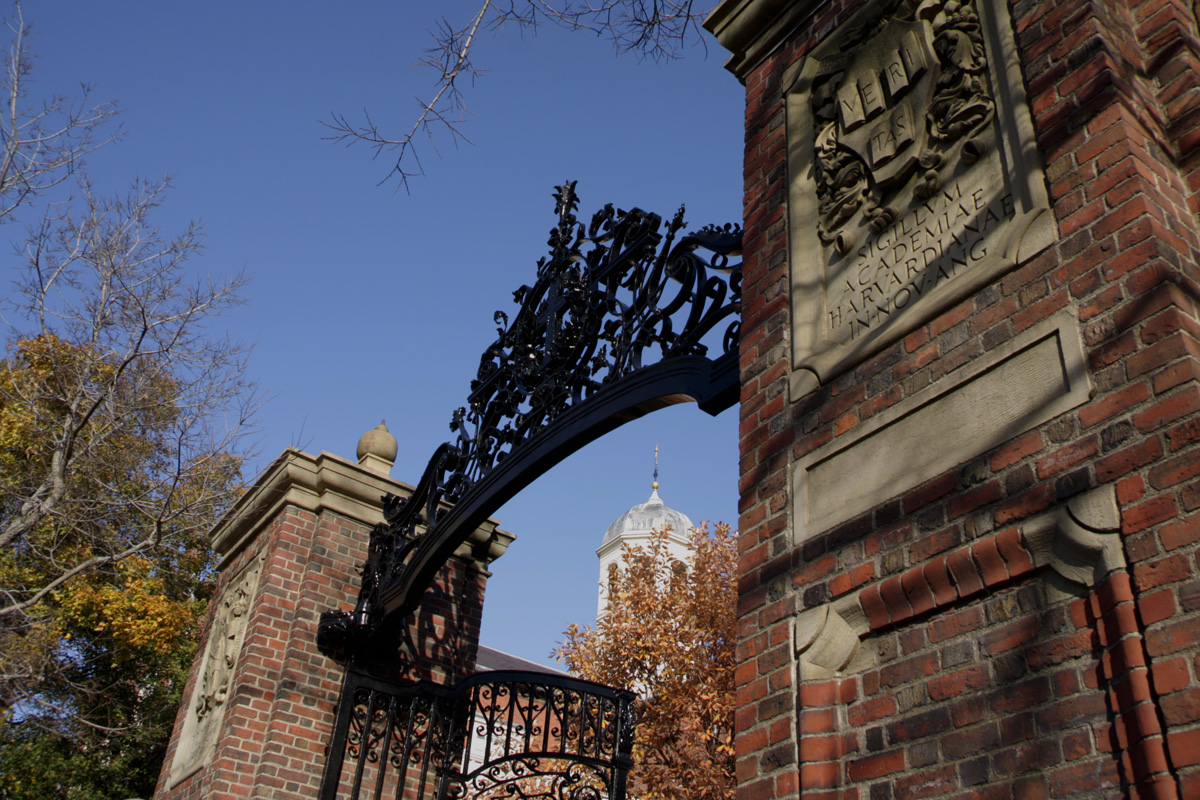I think I should just come right out and admit it: I’ve become obsessed with gates. I don’t dream of them, but I fixate on them. Even when the word “gate” isn’t in italics or boldface type, it jumps out as though it is. This obsession even intrudes at synagogue, where the world of work is supposed to be left at (ahem) the gates. “Open the gates for us, even now, even now, when the gates are closing,” goes the plaintive liturgy at the end of Yom Kippur, the Day of Atonement.
Such is the aftermath of what unexpectedly became the focus of my Nieman year: an e-book called “The Gates of Harvard Yard.” The e-book’s central themes are the visual glory of the 25 gates that enclose the Yard and Harvard’s neglect of some of these historic portals, which largely were built between 1889 and 1936. The project, I’m pleased to report, has prompted concerned alumni to take action.
In a talk to the Harvard Club of Chicago, I showed images of gates covered with rust or surrounded by patches of dirt where there once were swaths of grass. A sapling was growing in one gate. A delicate wrought-iron leaf had fallen off another.
The message resonated with my audience because one of the neglected gates—the main entry to the Yard, Johnston Gate—was donated by a Chicagoan, Samuel Johnston, Class of 1855. A financier and real estate entrepreneur, Johnston suffered from bad eyesight, but he had an eye for beauty. When he died in 1886, he left $10,000 “for the erection of a gate at the main entrance of the college yard, Harvard University.”
At the end of my talk, a club member threw me a softball question: Should we raise funds to beautify the gate? “Sure,” I replied, “and I pledge the first five dollars.” The crowd of more than 100 laughed, accepting my explanation that a journalist, especially one who works for a company just emerging from bankruptcy, can’t also be a philanthropist. Since then, I’ve joined with a club member who’s a landscape architect to confer with Harvard staff on alternative designs and budgets for a freshly landscaped Johnston Gate. We’ve even got a peg for finishing the work: 2014, when Harvard’s main gate will be exactly 125 years old.
Such is the aftermath of what unexpectedly became the focus of my Nieman year: an e-book called “The Gates of Harvard Yard.” The e-book’s central themes are the visual glory of the 25 gates that enclose the Yard and Harvard’s neglect of some of these historic portals, which largely were built between 1889 and 1936. The project, I’m pleased to report, has prompted concerned alumni to take action.
In a talk to the Harvard Club of Chicago, I showed images of gates covered with rust or surrounded by patches of dirt where there once were swaths of grass. A sapling was growing in one gate. A delicate wrought-iron leaf had fallen off another.
The message resonated with my audience because one of the neglected gates—the main entry to the Yard, Johnston Gate—was donated by a Chicagoan, Samuel Johnston, Class of 1855. A financier and real estate entrepreneur, Johnston suffered from bad eyesight, but he had an eye for beauty. When he died in 1886, he left $10,000 “for the erection of a gate at the main entrance of the college yard, Harvard University.”
At the end of my talk, a club member threw me a softball question: Should we raise funds to beautify the gate? “Sure,” I replied, “and I pledge the first five dollars.” The crowd of more than 100 laughed, accepting my explanation that a journalist, especially one who works for a company just emerging from bankruptcy, can’t also be a philanthropist. Since then, I’ve joined with a club member who’s a landscape architect to confer with Harvard staff on alternative designs and budgets for a freshly landscaped Johnston Gate. We’ve even got a peg for finishing the work: 2014, when Harvard’s main gate will be exactly 125 years old.




